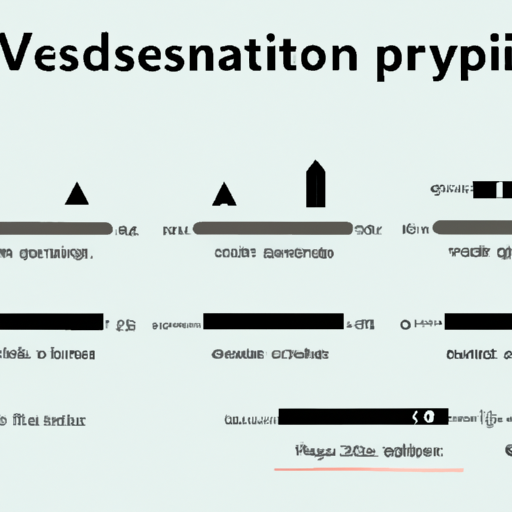Variable resistors, also known as potentiometers, are electronic components that allow for the adjustment of resistance in a circuit. They are commonly used in a variety of electronic devices such as radios, televisions, and amplifiers. Variable resistors come in different types and sizes, but they all serve the same purpose of controlling the flow of electric current in a circuit.

1. Material Selection: The first step in the production of variable resistors is the selection of materials. Variable resistors are typically made of a resistive material such as carbon, cermet, or wirewound. The choice of material depends on the desired resistance range, power rating, and temperature coefficient of the resistor. Carbon composition resistors are commonly used for low-cost applications, while wirewound resistors are preferred for high-power applications.
2. Resistor Element Formation: Once the resistive material is selected, the next step is to form the resistor element. This process involves depositing a thin film of the resistive material onto a substrate, such as a ceramic or fiberglass board. The resistive material is then patterned using photolithography or screen printing techniques to create the desired resistance value and tolerance.
3. Trimming: After the resistor element is formed, it is often necessary to trim the resistance value to meet the specified tolerance. This can be done using laser trimming, mechanical trimming, or chemical etching techniques. Trimming ensures that the resistor's resistance value is within the required range and provides precise control over the resistance adjustment.
4. Encapsulation: Once the resistor element is trimmed to the desired resistance value, it is encapsulated in a protective housing to prevent damage from external factors such as moisture, dust, and mechanical stress. The encapsulation material can be epoxy, plastic, or ceramic, depending on the application requirements. Encapsulation also helps to improve the resistor's stability and reliability over time.
5. Terminal Attachment: The final step in the production of variable resistors is attaching the terminals to the resistor element. The terminals are typically made of copper or brass and are soldered or welded to the resistor element. The terminals provide the electrical connection between the resistor and the circuit, allowing for the adjustment of resistance using a knob or slider.
Overall, the production of variable resistors involves a series of precise and controlled processes that ensure the quality and performance of these essential electronic components. By carefully selecting materials, forming the resistor element, trimming the resistance value, encapsulating the resistor, and attaching the terminals, manufacturers can produce variable resistors that meet the requirements of a wide range of electronic applications.
In conclusion, variable resistors play a crucial role in controlling the flow of electric current in electronic circuits. The production processes outlined in this article are essential for ensuring the quality and functionality of variable resistors. By understanding these processes, engineers and manufacturers can design and produce variable resistors that meet the performance and reliability requirements of modern electronic devices.
Variable resistors, also known as potentiometers, are electronic components that allow for the adjustment of resistance in a circuit. They are commonly used in a variety of electronic devices such as radios, televisions, and amplifiers. Variable resistors come in different types and sizes, but they all serve the same purpose of controlling the flow of electric current in a circuit.

1. Material Selection: The first step in the production of variable resistors is the selection of materials. Variable resistors are typically made of a resistive material such as carbon, cermet, or wirewound. The choice of material depends on the desired resistance range, power rating, and temperature coefficient of the resistor. Carbon composition resistors are commonly used for low-cost applications, while wirewound resistors are preferred for high-power applications.
2. Resistor Element Formation: Once the resistive material is selected, the next step is to form the resistor element. This process involves depositing a thin film of the resistive material onto a substrate, such as a ceramic or fiberglass board. The resistive material is then patterned using photolithography or screen printing techniques to create the desired resistance value and tolerance.
3. Trimming: After the resistor element is formed, it is often necessary to trim the resistance value to meet the specified tolerance. This can be done using laser trimming, mechanical trimming, or chemical etching techniques. Trimming ensures that the resistor's resistance value is within the required range and provides precise control over the resistance adjustment.
4. Encapsulation: Once the resistor element is trimmed to the desired resistance value, it is encapsulated in a protective housing to prevent damage from external factors such as moisture, dust, and mechanical stress. The encapsulation material can be epoxy, plastic, or ceramic, depending on the application requirements. Encapsulation also helps to improve the resistor's stability and reliability over time.
5. Terminal Attachment: The final step in the production of variable resistors is attaching the terminals to the resistor element. The terminals are typically made of copper or brass and are soldered or welded to the resistor element. The terminals provide the electrical connection between the resistor and the circuit, allowing for the adjustment of resistance using a knob or slider.
Overall, the production of variable resistors involves a series of precise and controlled processes that ensure the quality and performance of these essential electronic components. By carefully selecting materials, forming the resistor element, trimming the resistance value, encapsulating the resistor, and attaching the terminals, manufacturers can produce variable resistors that meet the requirements of a wide range of electronic applications.
In conclusion, variable resistors play a crucial role in controlling the flow of electric current in electronic circuits. The production processes outlined in this article are essential for ensuring the quality and functionality of variable resistors. By understanding these processes, engineers and manufacturers can design and produce variable resistors that meet the performance and reliability requirements of modern electronic devices.